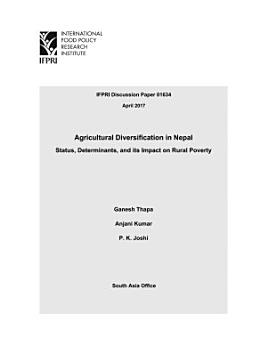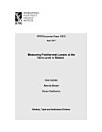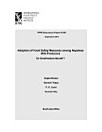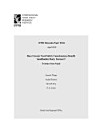Agricultural diversification in Nepal: Status, determinants, and its impact on rural poverty
Thapa, Ganesh · Kumar, Anjani · Joshi, Pramod Kumar
Apr 2017 · IFPRI Discussion Paper Buku 1 · Intl Food Policy Res Inst
eBook
56
Halaman
family_home
Memenuhi syarat
info
reportRating dan ulasan tidak diverifikasi Pelajari Lebih Lanjut
Tentang eBook ini
As in many parts of the developing world, the share of high value crops in agricultural gross domestic product (AgGDP) has increased substantially in Nepal. We contribute to the literature on trends in agricultural development in the poorest countries by answering the research question on “Does transition from traditional to high-value agriculture reduce rural poverty in poor developing countries”? We also identified the drivers leading to this transition. The study uses survey data from three rounds of the nationally representative Nepal Living Standard Surveys: NLSS I (1994/1995), NLSS II (2004/2005) and NLSS III (2010/2011). Multi-level model was used to study the determinants of agricultural diversification. To estimate the causal impact of agricultural diversification on welfare measures, propensity score matching and instrumental variable techniques were used. Results indicate that there has been a rightward shift in the distribution of the share (percent) of high-value crops between 1995 and 2004 and between 2004 and 2010, respectively. The area as well as the shared by major cereals (paddy, maize, and wheat) is declining over years. However, it is increasing for high-value crops (potato, vegetables, spices/condiments, and fruits). The percentage increase in share of the high-value crops was higher in or adjacent to urbanized districts between 1995 and 2010. The factors positively associated with the agricultural diversification are female-headed households, caste, mother's education, net-buyer status, urban region, remittance, farm size, kitchen garden, improved seeds, telephone and refrigerator. We found positive impact of agricultural diversification towards high-value crops on rural poverty and monthly per capita consumption expenditure. However, for cereal crops grower, we find the negative impact on poverty and monthly per capita consumption expenditure.
Beri rating eBook ini
Sampaikan pendapat Anda.
Informasi bacaan
Smartphone dan tablet
Instal aplikasi Google Play Buku untuk Android dan iPad/iPhone. Aplikasi akan disinkronkan secara otomatis dengan akun Anda dan dapat diakses secara online maupun offline di mana saja.
Laptop dan komputer
Anda dapat mendengarkan buku audio yang dibeli di Google Play menggunakan browser web komputer.
eReader dan perangkat lainnya
Untuk membaca di perangkat e-ink seperti Kobo eReaders, Anda perlu mendownload file dan mentransfernya ke perangkat Anda. Ikuti petunjuk Pusat bantuan yang mendetail untuk mentransfer file ke eReaders yang didukung.








